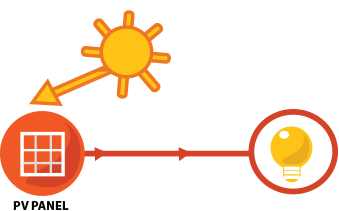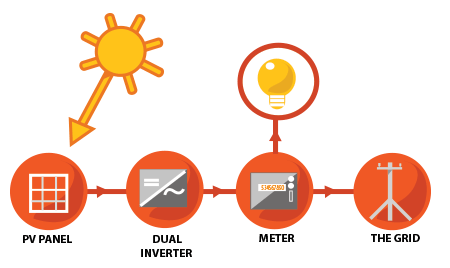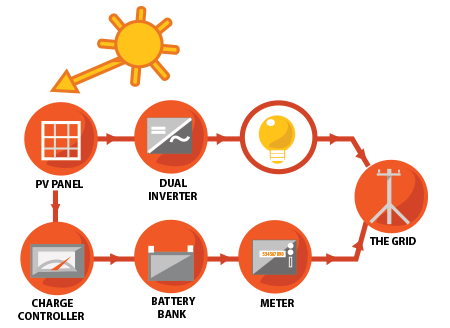Solar Energy Basics
Understanding Solar Energy basics
Solar panels are made up of photovoltaic (PV) cells, which convert sunlight into direct current (DC) electricity. Solar cells are made of a common semiconductor material primarily found in silicon.
Monocrystalline modules are cut from single crystal silicon and have the fewest impurities. They are the most expensive to produce and are the most efficient PV panels.
Polycrystalline modules are cut from a block of silicon comprised of a large number of crystals. They are the most widely used and cost effective PV modules on the market.
Thin film –
These modules are designed with the purpose of reducing cost as well as using space more efficiently. The structure and materials allow the module to be flexible in design.
A solar inverter will convert direct current (DC) from the solar panel into alternating current (AC), which is used by your appliances. The inverter will perform an important function namely, the control of energy production, as well as the monitoring of the entire solar PV system.
This PV module is used to power systems directly, such as appliances or a solar water pump.It is suitable in remote areas such as farms, which would require water pumping.
Grid tied systems are connected to the utility company’s grid. The systems allow you to draw energy from the panels during the day. Any excess energy will flow back into the utility grid
A solar backup system contains a battery which stores any excess energy produced, which in turn can be used when the utility grid is down.
This system is independent of the utility grid. The solar panels get energy to power loads (appliances) and charge batteries.
Batteries are then used to store energy during periods when panels are not producing the required amounts of energy, particularly during the night and onrainy days.
Energy that is generated from the solar panels during the day can be stored in a battery bank. The energy can then be used during the evening or on cloudy days or during power cuts. The type of battery chosen depends on the energy demand of the solar system and budget, installation and maintenance.
